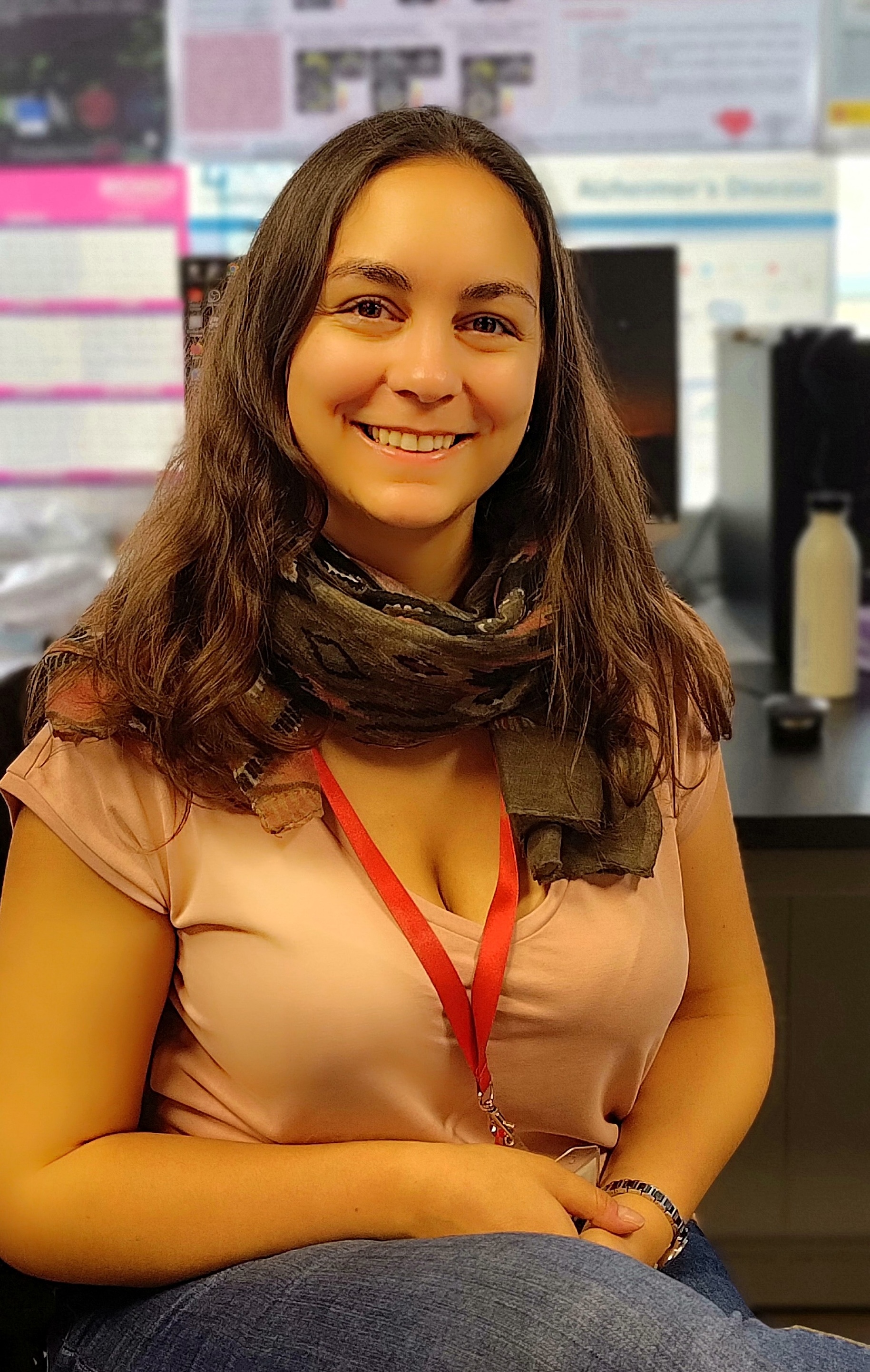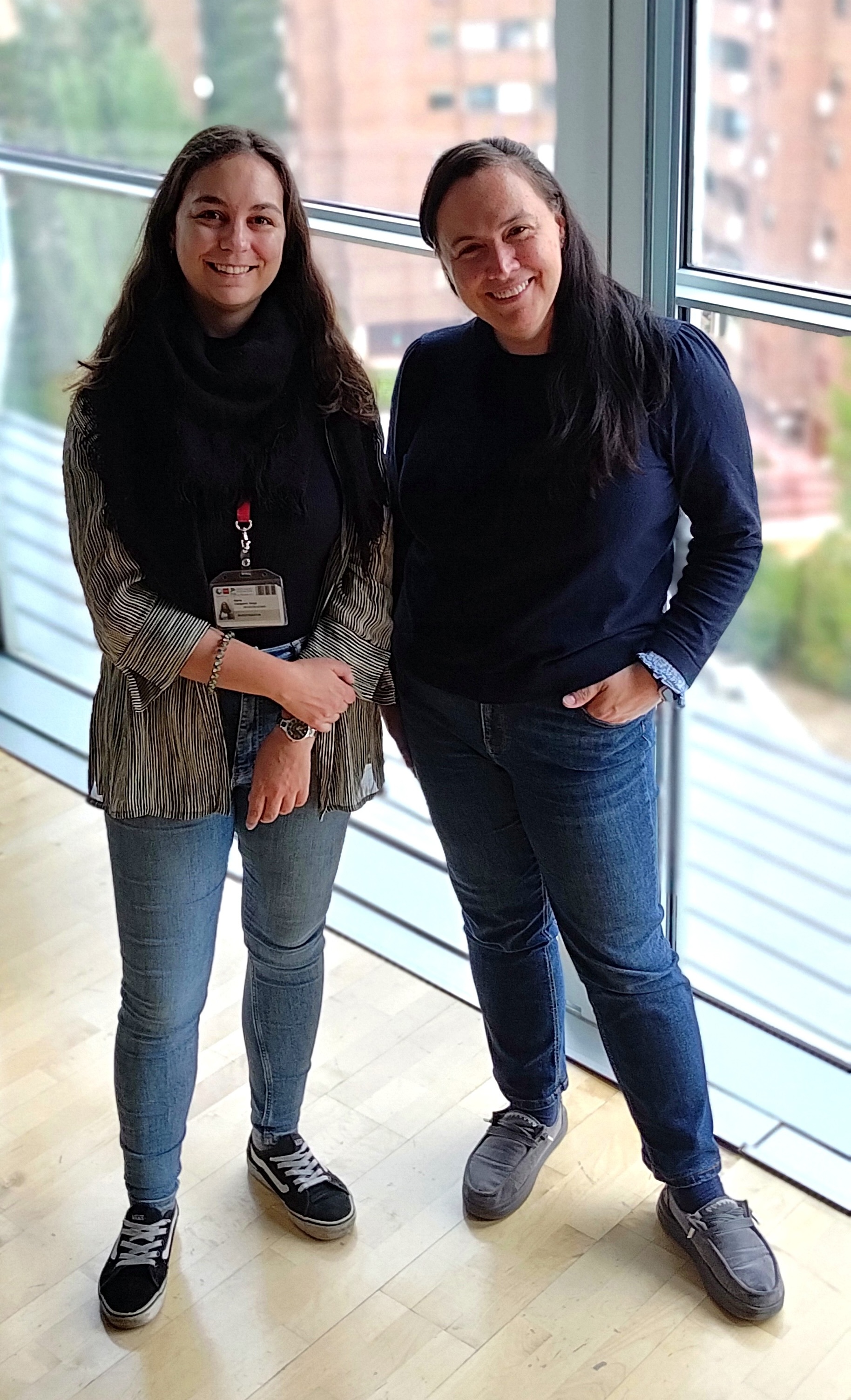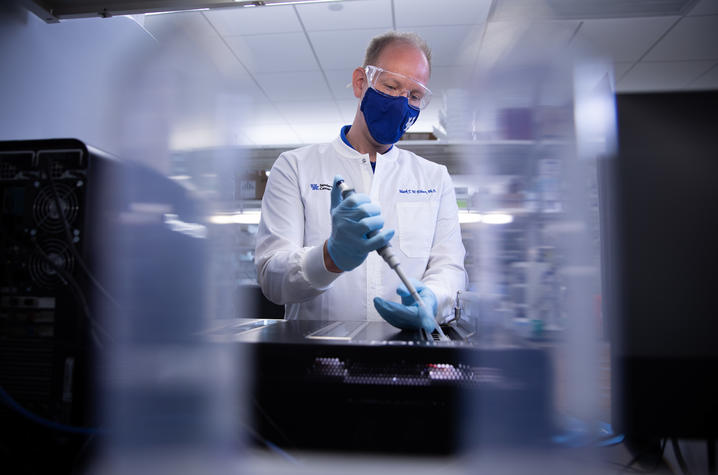
Healthy blood flow in the brain is crucial for transporting key nutrients to brain cells that support cognitive health. In the early stages of Alzheimer’s disease, some people develop tiny blood clots in their brains that reduce blood flow and speed up the disease.

If physicians could identify these individuals, they could then prescribe blood-thinning medications to them, potentially eliminating those clots and slowing cognitive decline. The problem is, there are currently no diagnostic tests available to identify people with Alzheimer’s who might benefit from those medicines.
Marta Casquero-Veiga, PhD, a BrightFocus Foundation Alzheimer’s Disease Research grant recipient, hopes to change that. She and her colleagues at the Jiménez Díaz Foundation Health Research Institute in Madrid are using innovative technology to follow the development of tiny clots in Alzheimer’s animal models.
They have developed a novel method based on an injectable molecule that travels through the bloodstream to the brain and homes in on clot-forming proteins. Using imaging tools, the researchers can observe the formation and location of clots in the brain.
Dr. Casquero-Veiga’s ultimate goal is to develop a diagnostic tool that could detect tiny brain clots in people who are in the early stages of Alzheimer’s disease. “While potential treatments exist to target this issue, it goes undetected because there are no current diagnostic tools for it,” she said. “Our goal is to develop safe, non-invasive biomarkers that can be used to detect these clots in Alzheimer’s patients through neuroimaging.”
An “Obsession” with Solving the Mysteries of the Brain

Dr. Casquero-Veiga set off on a path to study Alzheimer’s early in life. She decided to become a biologist in elementary school, when she became enamored of all the puzzles the physical world presented that needed to be solved. As an undergraduate, she became obsessed with the challenge of understanding the biggest puzzle of all—the brain—and how different diseases cause normal brain processes to go awry.
While Dr. Casquero-Veiga was pursuing her PhD at Instituto de Investigación Sanitaria Gregorio Marañón in Madrid, she concentrated on developing imaging techniques for diagnosing brain diseases and developing personalized therapies. After obtaining her PhD in 2021, she joined the lab of Marta Cortés Canteli, PhD, also a BrightFocus Alzheimer’s Disease Research grant recipient, at the Centro Nacional de Investigaciones Cardiovasculares (CNIC).
For her current study, Dr. Casquero-Veiga is working with a model of early-onset, aggressive Alzheimer’s disease. The injectable molecules the researchers developed— called nanoradiotracers—are attached to radioactive particles. The molecules are specially designed to identify certain elements found in brain clots. After the nanoradiotracers are injected into the bloodstream, they travel to the brain and accumulate in clots. The researchers then use positron emission tomography (PET) and magnetic resonance imaging (MRI) to obtain detailed images of the clots.
Previous discoveries from Dr. Cortes-Canteli’s lab demonstrated that intervening early to fight blood clots in the brain significantly delayed cognitive decline and neurodegeneration in Alzheimer’s models. Dr. Casquero-Veiga believes that a tool similar to the one she is currently testing could be developed that would allow physicians to identify people with tiny blood clots in their brains, so they can prescribe anti-clotting medications and potentially slow down the progression of Alzheimer’s in those people.
BrightFocus Foundation’s commitment to supporting early-career researchers like me is a powerful reminder that we are not alone in this journey. Their belief in our potential allows us to explore groundbreaking ideas that could lead to real breakthroughs for patients.
A Multifaceted Approach to Studying Blood Clots and Brain Health
In the future, Dr. Casquero-Veiga plans to expand her research by testing these brain-imaging techniques in a range of Alzheimer’s models to help define how her diagnostic tool might work in diverse populations of people. She also plans to study the potential of imaging tools for monitoring how well the models respond to anti-clotting treatments.
As she advances her research, Dr. Casquero-Veiga continues to be inspired by her mentor, Dr. Cortés-Canteli, who encourages all her mentees to take a multidisciplinary approach to solving biological puzzles.
“This broader perspective is incredibly valuable, especially for early-career researchers like me in the biomedical sciences,” Dr. Casquero-Veiga said. “It helps us avoid getting too narrowly focused by reminding us of the importance of understanding basic molecular mechanisms, which are essential for ensuring the success of our ultimate goal: translating research from the bench to the bedside.”
Dr. Casquero-Veiga speaks about the impact that BrightFocus funding had on her research.
In addition to benefiting from grant funding, Dr. Casquero-Veiga also participated in the BrightFocus Alzheimer’s Fast Track workshop in 2023, an immersive learning and networking opportunity for early-career Alzheimer’s and dementia researchers.
Dr. Casquero-Veiga believes her research would not have been possible without the support of BrightFocus Foundation’s Alzheimer’s Disease Research program. The organization’s “commitment to supporting early-career researchers like me is a powerful reminder that we are not alone in this journey,” she said. “Their belief in our potential allows us to explore groundbreaking ideas that could lead to real breakthroughs for patients. This backing is not just an investment in our research, but in the future of Alzheimer’s research as a whole.”
About BrightFocus Foundation
BrightFocus Foundation is a premier global nonprofit funder of research to defeat Alzheimer’s, macular degeneration, and glaucoma. Since its inception more than 50 years ago, BrightFocus and its flagship research programs—Alzheimer’s Disease Research, Macular Degeneration Research, and National Glaucoma Research—has awarded more than $300 million in research grants to scientists around the world, catalyzing thousands of scientific breakthroughs, life-enhancing treatments, and diagnostic tools. We also share the latest research findings, expert information, and resources to empower the millions impacted by these devastating diseases. Learn more at brightfocus.org.
Disclaimer: The information provided here is a public service of BrightFocus Foundation and is not intended to constitute medical advice. Please consult your physician for personalized medical, dietary, and/or exercise advice. Any medications or supplements should only be taken under medical supervision. BrightFocus Foundation does not endorse any medical products or therapies.
- Disease Biology
- Research Spotlight
Featured Grant Recipients

Marta Casquero-Veiga, PhD
Jiménez Díaz Foundation Health Research Institute









